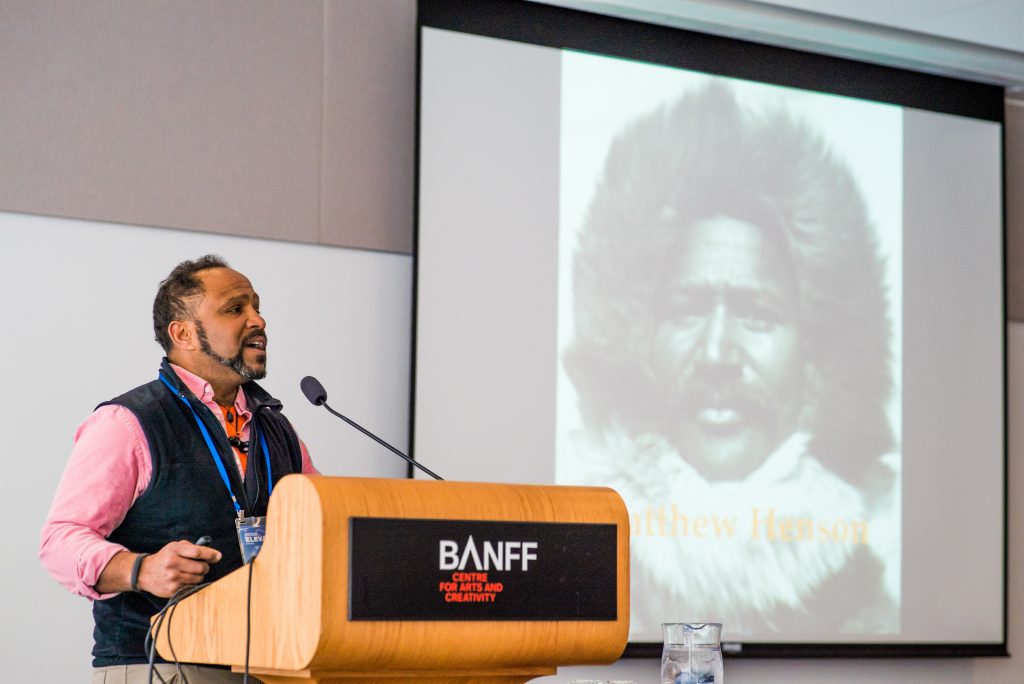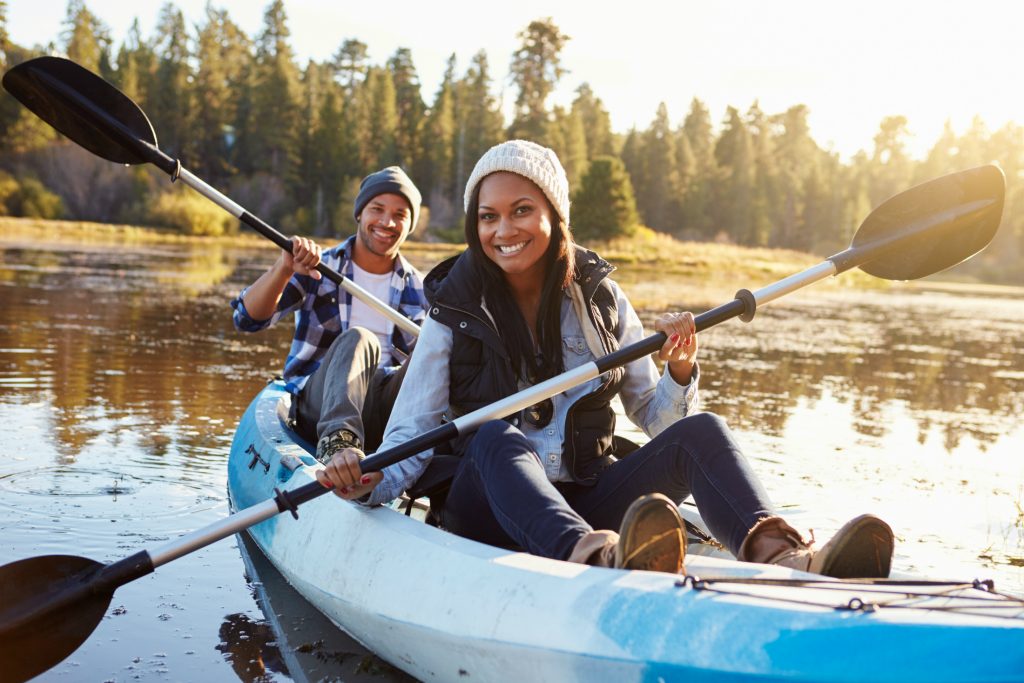At the Adventure Travel Trade Association’s (ATTA) recent AdventureELEVATE in Alberta, Canada, I had the privilege of moderating a very lively and topical discussion. With my friends Rue Mapp and Evita Robinson, I conducted a workshop called A Market on the Edge: Designing Trips and Marketing to African-American Travelers, which focused on the very complex issue of diversity, equity, and inclusion in the adventure travel industry. With conspicuously low rates of participation among African-Americans and other people of color in the business of foreign and domestic tourism, our purpose was to provide ATTA member companies with a bit of insight on how to attract and retain non-white consumers as customers.
As a journalist, I’ve carved out an expertise on the topic of diversity in outdoor recreation. I have reported on a variety of different expeditions from the Arctic National Wildlife Refuge in Alaska to Lake Titicaca in Bolivia to Serengeti National Park in Tanzania. With a personal passion for exotic locations, much of my work has focused on the lack of representation among people of color in the world of adventure tourism. Joined by two of the nation’s leading experts on Black outdoor recreation and foreign travel, Mapp, Robinson, and I addressed many of the challenges and opportunities in engaging the African-American market.

An Untapped Market
Unfortunately, if you take a look at the many thousands of catalogs, brochures, magazine articles, blog posts, Facebook pages, and advertisements in the adventure travel industry, very few of these media placements depict people of color. Though anecdotal observations at downhill ski resorts, backcountry lodges, yoga retreats, and overseas tour groups reveal the presence of relatively few Black and brown people, their numbers are indeed growing. But few travel destinations, hotel properties, or tour operators seem prepared or even willing to reach out to this rising market.
Many providers of adventure amenities believe their services are open and inviting to everyone, which in principle they are, but most fail to reach, inspire, and engage a demographic of the population that is gaining in both cultural and economic significance. As education, wealth, and influence steadily increase throughout the African-American community, the potential of this emerging cohort has yet to be fully realized within the world of adventure travel. According to a 2015 report from the Nielsen Company, a global measurement and data analytics agency, Black consumers are the key to unlocking the future spending power of the next generation.
“The social and cultural clout of African-Americans is quickly rising and will continue to do so for decades to come,” according to the report. “As marketers and advertisers compete for the attention of young and influential consumers, developing longer brand relationships with Black consumers must be an indispensable component of this goal.”
If marketing and outreach initiatives are going to keep pace with an ever-expanding population of non-white consumers, adventure travel professionals, which include many ATTA members, need to achieve a level of cultural competency allowing them to bring more people of color into their operations not only as clients, but also as employees, vendors, and service providers. Of course, the question is how?
Trust, Rapport, and Relationships
During our AdventureELEVATE workshop, Mapp, Robinson, and I outlined a few basic concepts to help delegates better promote their products and services to the African-American community. Each of us agrees that it all begins with building relationships.
Affinity groups that are directly involved in communities of color are an excellent place to start. Outdoor Afro, for example, is a national organization working in more than 30 states that helps its members forge a connection with the natural world. Mapp, the organization’s founder and CEO, believes that, through a board network of leaders across the country, Outdoor Afro can offer travel professionals a gateway into the hearts and minds of Black consumers.
“You can put billboards wherever you want and you can put Black people in magazine ads, but that doesn’t mean Black people will see them, or react to them, or trust them,” she said. “Outdoor Afro can encourage its community to have experiences it wouldn’t have otherwise tried. Within a group of like-minded people, the ATTA can create the kind of individual and community transformation that is possible through outdoor adventure and international travel.”
By establishing rapport with trusted leaders within specific affinity groups, travel companies can make themselves known to many new customers at once. These organizations include churches with large African-American congregations, historically Black colleges and universities, or clubs like the National Brotherhood of Skiers, the largest snow sports association in the country. Its members are almost exclusively Black. However, Mapp said it is important to not only share resources and information, but to recognize cultural differences and craft messages that are relevant to the audience companies are trying to reach.
“People have to see that investments are being made that really matter in people’s lives,” she said. “You might hear that a place or an experience is a great thing to do or great place to be. But unless a person can see how it fits in their lives then it’s not going to land in a relevant place. It’s not a credible thing to come from the outside with your own values without considering the interests of the people you are trying to reach.”

Above all else, sincere relationships built within the African-American community must be authentic. Trusted influencers and ambassadors can lead their followers directly on familiarization trips or via social media to destinations they may never have thought possible to visit. But that’s not to say tour operators need to necessarily change the intrinsic nature of their programs.
“Black people want the same experience that everyone else does.” said Robinson, creator of the Nomadness Travel Tribe, an international organization of more than 19,000 Black travelers. “It doesn’t have to be the ‘Black version’ of whatever it is, because then you start digging into stereotypes and that just gets murky for everybody. Just make a dope version that anyone would want to experience and get it in front of the right people.”
From these authentic interactions can come a lot of worthwhile collateral for marketing purposes. Authentic images and testimonials featuring a diverse clientele can encourage higher rates of participation among Black consumers. But if people of color cannot be immediately drawn to a destination, Robinson suggests tour operators explicitly ask Black residents how they can make their location more attractive.
“Have an open and honest conversation about their experience and ask them, if they were somebody coming in that was Black or Latino or whatever, what would they want to see or what would they want to show them,” Robinson said. “Get their perspective, because they are the key to the destination and what it’s like to be a person of color in that destination.”
From Workshop to Reality
Those who attended the ATTA diversity workshop took a lot of the information and insight they received to heart. A tourist destination in Alabama with a large African-American population, Mobile offers a variety of adventure-based attractions in addition to a vibrant food and music scene. Right on the Gulf of Mexico with plenty of opportunities to explore the natural wonders of a thriving ecosystem, even this southern U.S. city finds it challenging to attract Black visitors. Stacy Hamilton, vice president of marketing and communications at Visit Mobile, said her biggest takeaway from the workshop was the importance of direct community engagement.
“We have never in our segmentation and direct advertising really zeroed in specifically on the African-American traveler. We knew they were predisposed to come here because of our history and our culture. But we need to tell our story more and to more people,” she said. “We’ve started an actual strategy to reach the African-American traveling audience. This is an untapped market we didn’t know existed. I didn’t know that there were groups of people — African-American travelers — that are looking for these unique experiences.”
With a new perspective identifying Black consumers as a target audience, adventure travel professionals have a wonderful opportunity to tap into this emerging market, both in the United States and abroad. According to the Nielsen Company in its 2015 report, from 2000 to 2014, the nation’s Black population grew 35 percent faster than the total population. Further, it is projected to increase from the current 45.7 million to 74.5 million people, making up 17.9 percent of the total U.S. population by 2060. “Black consumers are increasingly viewed as trendsetters and influencers across the U.S. mainstream,” the report concluded.
A 2018 study released by the Nielsen Company further reported the purchasing power of Black consumers now exceeds $1.2 trillion USD annually. That kind of financial influence will undoubtedly leave a lasting impression upon the U.S. economy as a whole, including the adventure travel industry. If tour companies and destinations are going to be successful over the next five decades, the African-American market must be engaged. It certainly cannot be ignored.
